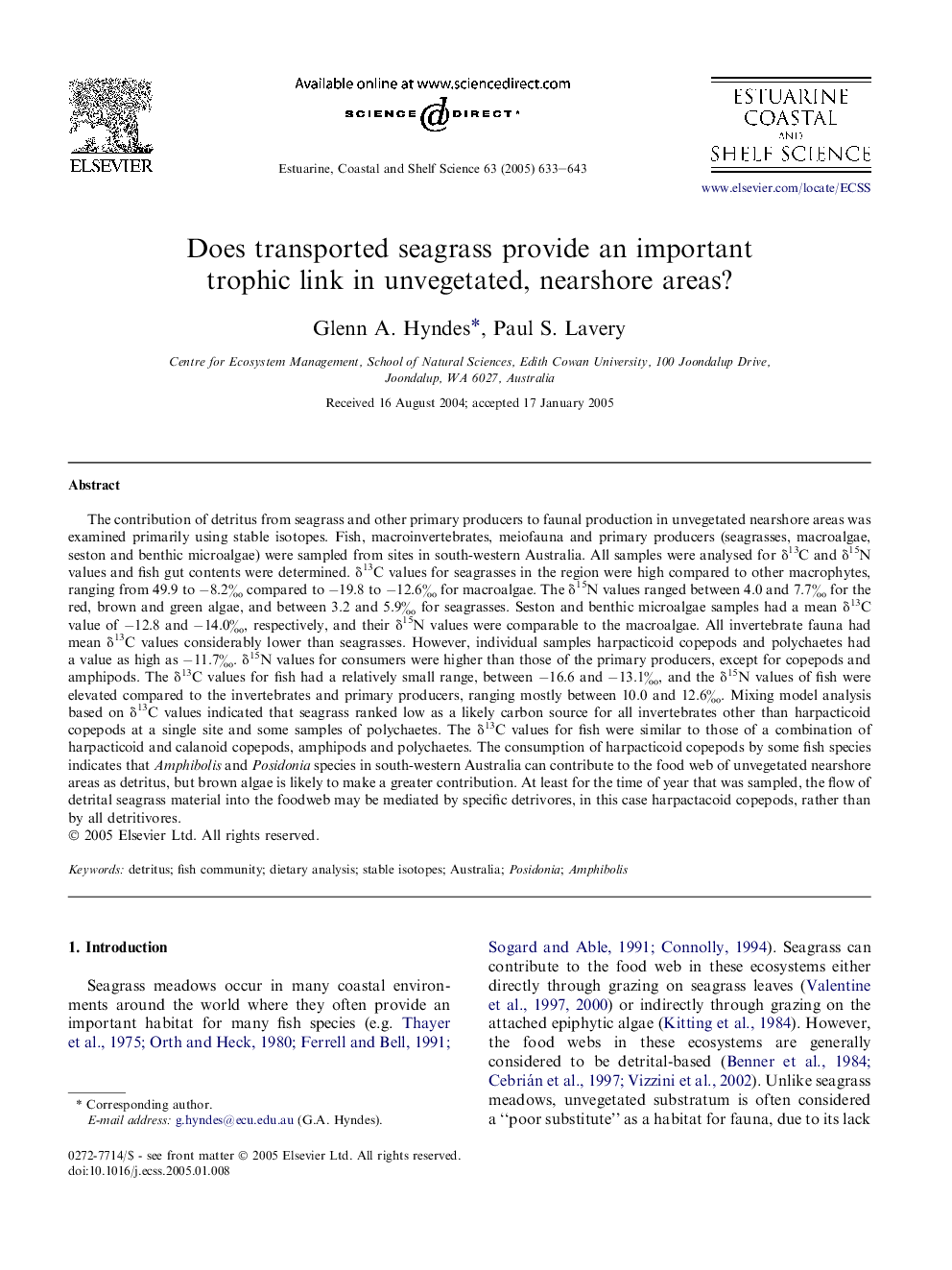| کد مقاله | کد نشریه | سال انتشار | مقاله انگلیسی | نسخه تمام متن |
|---|---|---|---|---|
| 9480819 | 1326777 | 2005 | 11 صفحه PDF | دانلود رایگان |
عنوان انگلیسی مقاله ISI
Does transported seagrass provide an important trophic link in unvegetated, nearshore areas?
دانلود مقاله + سفارش ترجمه
دانلود مقاله ISI انگلیسی
رایگان برای ایرانیان
کلمات کلیدی
موضوعات مرتبط
مهندسی و علوم پایه
علوم زمین و سیارات
زمین شناسی
پیش نمایش صفحه اول مقاله

چکیده انگلیسی
The contribution of detritus from seagrass and other primary producers to faunal production in unvegetated nearshore areas was examined primarily using stable isotopes. Fish, macroinvertebrates, meiofauna and primary producers (seagrasses, macroalgae, seston and benthic microalgae) were sampled from sites in south-western Australia. All samples were analysed for δ13C and δ15N values and fish gut contents were determined. δ13C values for seagrasses in the region were high compared to other macrophytes, ranging from 49.9 to â8.2â° compared to â19.8 to â12.6â° for macroalgae. The δ15N values ranged between 4.0 and 7.7â° for the red, brown and green algae, and between 3.2 and 5.9â° for seagrasses. Seston and benthic microalgae samples had a mean δ13C value of â12.8 and â14.0â°, respectively, and their δ15N values were comparable to the macroalgae. All invertebrate fauna had mean δ13C values considerably lower than seagrasses. However, individual samples harpacticoid copepods and polychaetes had a value as high as â11.7â°. δ15N values for consumers were higher than those of the primary producers, except for copepods and amphipods. The δ13C values for fish had a relatively small range, between â16.6 and â13.1â°, and the δ15N values of fish were elevated compared to the invertebrates and primary producers, ranging mostly between 10.0 and 12.6â°. Mixing model analysis based on δ13C values indicated that seagrass ranked low as a likely carbon source for all invertebrates other than harpacticoid copepods at a single site and some samples of polychaetes. The δ13C values for fish were similar to those of a combination of harpacticoid and calanoid copepods, amphipods and polychaetes. The consumption of harpacticoid copepods by some fish species indicates that Amphibolis and Posidonia species in south-western Australia can contribute to the food web of unvegetated nearshore areas as detritus, but brown algae is likely to make a greater contribution. At least for the time of year that was sampled, the flow of detrital seagrass material into the foodweb may be mediated by specific detrivores, in this case harpactacoid copepods, rather than by all detritivores.
ناشر
Database: Elsevier - ScienceDirect (ساینس دایرکت)
Journal: Estuarine, Coastal and Shelf Science - Volume 63, Issue 4, June 2005, Pages 633-643
Journal: Estuarine, Coastal and Shelf Science - Volume 63, Issue 4, June 2005, Pages 633-643
نویسندگان
Glenn A. Hyndes, Paul S. Lavery,